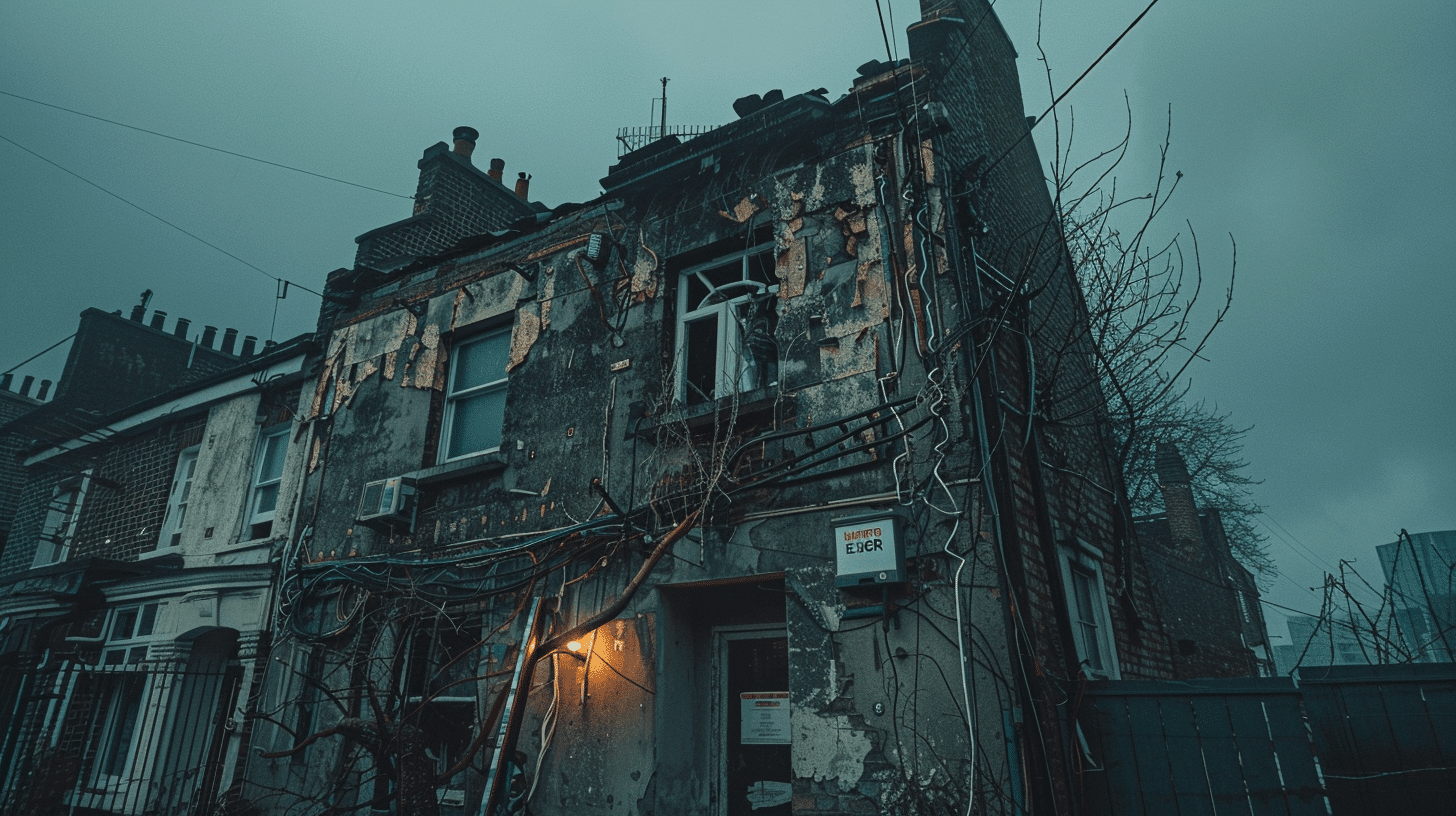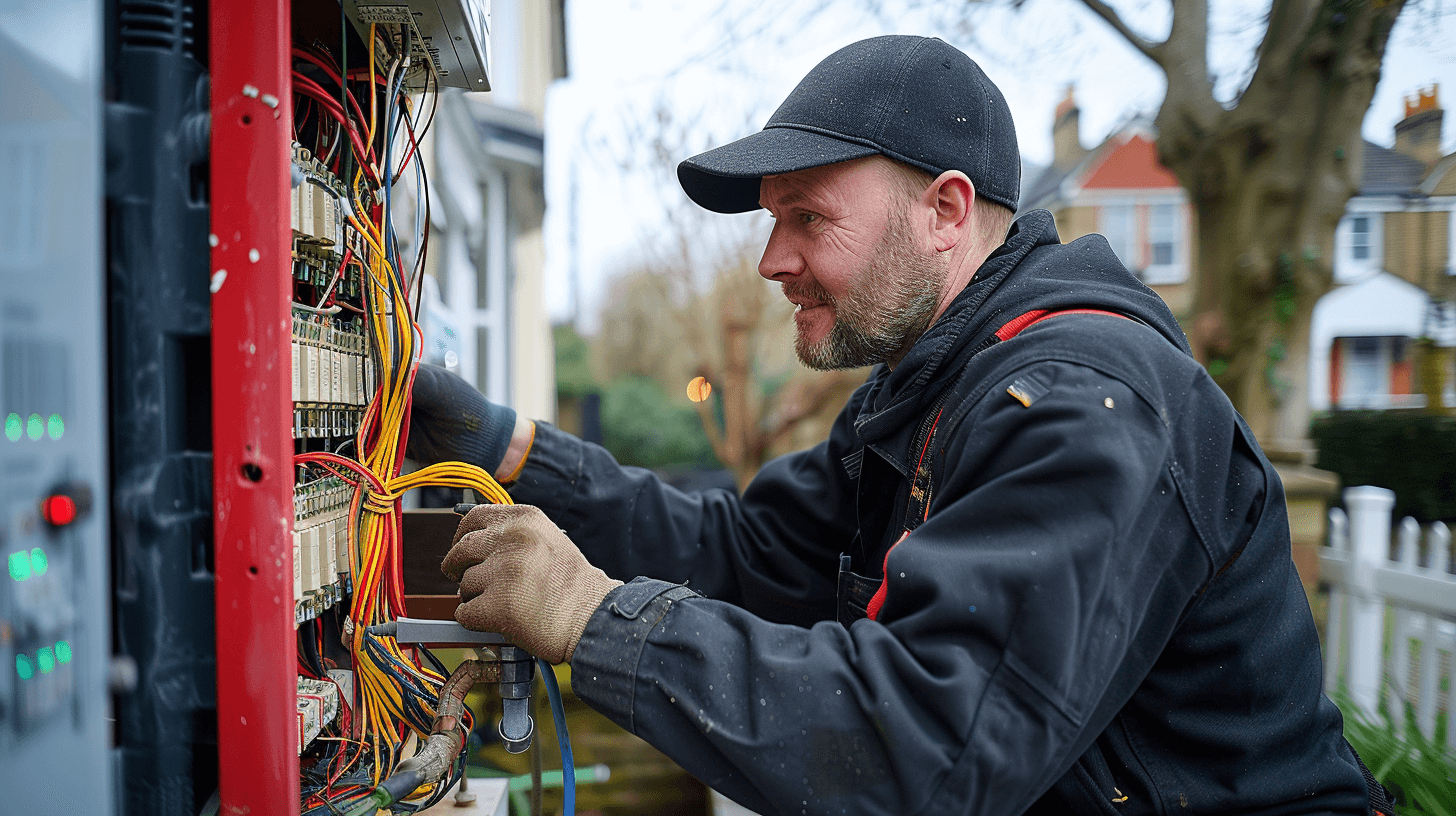 What happens if my property fails the electrical safety inspection
What happens if my property fails the electrical safety inspection

When you receive an ‘unsatisfactory’ Electrical Installation Condition Report (EICR), immediate action is required to ensure the safety and compliance of your property. Here are the steps you should take:
Understanding Your EICR
Firstly, review the EICR to understand the specific issues identified. The report will detail any damage, defects, and instances of non-compliance that have led to the ‘unsatisfactory’ rating. It is crucial to interpret these details accurately to prioritise the necessary remedial actions.
Time-Sensitive Obligations
You must act swiftly. Electrical faults can pose serious risks, and there may be legal time frames within which you must respond to ensure the safety of occupants and compliance with regulations. Check the report for any recommended timelines for repairs.
Prioritising Safety and Compliance
The initial response to a failed inspection significantly impacts the safety of the property. Prioritise remedial actions that address the most severe safety risks first. Engage a qualified electrician who is competent and registered to perform the necessary work, adhering to the UK electrical safety standard, BS 7671.
Engaging Qualified Electricians
Contact a registered electrician to assess the EICR and carry out the required remedial work. Ensure they provide you with a clear plan of action and time frame for the repairs. It’s essential to choose an electrician with the appropriate accreditations and experience, such as those affiliated with NICEIC or similar bodies.
By following these steps, you can navigate the aftermath of a failed electrical safety inspection with diligence and ensure the continued safety and legal compliance of your property.
Understanding the EICR and Its Components

When your property undergoes an electrical safety inspection, the Electrical Installation Condition Report (EICR) becomes a critical document, assessing various elements to ensure compliance and safety.
Core Elements Assessed by the EICR
The EICR meticulously examines several key components of your property’s electrical system:
- Earthing and Bonding: These are essential safety mechanisms that prevent electric shock by ensuring that in the event of a fault, the electrical current has a safe path to the ground.
- Switchgear and Controlgear: These components, including fuses and circuit breakers, are crucial for controlling and protecting the electrical system.
- Circuit Integrity: The EICR checks for the proper configuration and condition of circuits, ensuring they are not overloaded or at risk of overheating.
Common Reasons for an ‘Unsatisfactory’ EICR Rating
An ‘unsatisfactory’ rating may arise from:
- Circuit Overloads: Circuits that carry more current than they are rated for pose a significant fire risk.
- Faulty Electrical Work: Incorrectly installed or aged wiring can lead to dangerous situations.
- Inadequate RCD Protection: Residual Current Devices are vital for shock prevention, especially in areas prone to wetness.
The EICR as a Guide for Electrical Compliance
The EICR serves as a comprehensive guide for property owners, detailing:
- Safety Standards: It references the UK electrical safety standard BS 7671, which outlines the criteria for a safe electrical installation.
- Required Remedial Actions: The report specifies what corrective measures must be taken to achieve compliance and ensure safety.
- Future Inspection Readiness: By adhering to the EICR’s guidance, property owners can better prepare for subsequent inspections, avoiding future ‘unsatisfactory’ ratings.
By understanding the EICR’s components and the common issues it identifies, property owners can take proactive steps to ensure their electrical systems are safe and compliant.
Legal Responsibilities Following a Failed Electrical Safety Inspection

Upon receiving an ‘unsatisfactory’ Electrical Installation Condition Report (EICR), property owners are legally obligated to undertake immediate corrective measures. The EICR will detail any departures from the UK national standard BS 7671, which must be addressed promptly to ensure the safety of the occupants and compliance with electrical safety regulations.
Divergent Regulations Across the UK
Regulatory requirements for landlords regarding electrical safety inspections vary:
- England: Landlords are mandated to have their properties inspected every five years or at each change of tenancy.
- Scotland: Similar to England, a five-year inspection cycle is compulsory, with additional requirements for inspection at the change of tenancy.
Penalties for Non-Compliance
Failure to comply with electrical safety standards can result in:
- Financial Penalties: Substantial fines are imposed on those who neglect their legal duties concerning electrical safety.
- Legal Action: In severe cases, non-compliance can lead to legal proceedings, including criminal charges for the most egregious violations.
Enforcement of Mandatory Inspection Duties
The law enforces the 5-year inspection duty through:
- Local Authorities: They have the power to demand proof of an EICR and can enforce remedial action if a property fails to meet the required standards.
- Housing Acts: Legislation such as the Housing and Planning Act 2016 provides a framework for local authorities to act against non-compliant landlords.
Property owners must understand these legal implications to avoid penalties and ensure the safety and well-being of their tenants.
Criteria for Hiring Electricians Post-EICR Failure

When your property’s electrical system fails to meet the required safety standards, it is crucial to engage a qualified electrician to perform the necessary remedial work. Here are the qualifications and checks you should consider:
Essential Qualifications for Electricians
Electricians tasked with remedial actions should possess:
- Accreditation: Look for electricians accredited by recognised bodies such as the National Inspection Council for Electrical Installation Contracting (NICEIC).
- Certification: Ensure they have the latest certification in electrical work, which demonstrates their knowledge of current safety standards and regulations.
Registration with Competent Authorities
Registration ensures adherence to safety standards:
- Competent Person Schemes: Electricians registered with these schemes are assessed to ensure they are capable of conducting work in compliance with the building regulations.
- Regular Assessments: Registered electricians undergo periodic assessments to maintain their competency levels.
The Role of NICEIC Accreditation
NICEIC accreditation is a mark of quality:
- Quality Assurance: NICEIC provides independent assessment and certification for electricians, ensuring they meet technical and safety standards.
- Consumer Protection: Hiring an NICEIC-accredited electrician provides you with a guarantee of work and access to a formal complaints procedure.
Verifying Electrician Credentials
To verify credentials:
- Check IDs and Certificates: Request and verify their identification and certificates of qualification.
- Online Registers: Utilise online databases provided by accreditation bodies to confirm the electrician’s registration status.
By ensuring your electrician meets these criteria, you can confidently address the issues highlighted in an ‘unsatisfactory’ EICR, restoring safety and compliance to your property.
Financial Implications of an ‘Unsatisfactory’ EICR

Costs of Remedial Actions
After a failed electrical safety inspection, you’re faced with immediate and potentially significant expenses to rectify the identified issues. These costs can vary widely, depending on the severity and nature of the defects. Common remedial actions may include:
- Replacing outdated wiring or equipment
- Upgrading earthing and bonding to meet current standards
- Installing residual current devices (RCDs) for additional protection
Insurance Validity and Coverage
An ‘unsatisfactory’ EICR can invalidate your property insurance if it’s found that you have not complied with electrical safety standards. This could lead to:
- Denial of claims for damages caused by electrical faults
- Increased premiums upon renewal
- Difficulty finding coverage from insurers
Financial Risks of Non-Compliance
Ignoring the EICR’s findings not only endangers occupants but also exposes you to financial liabilities, such as:
- Fines imposed by regulatory authorities for non-compliance
- Legal costs associated with tenant lawsuits or government action
- Loss of rental income during remediation and inspection periods
Mitigating Financial Impact
To mitigate these financial risks, proactive measures are essential:
- Schedule regular electrical inspections to catch issues early
- Employ qualified electricians for maintenance and upgrades
- Stay informed about changes in electrical safety regulations
By taking these steps, you can maintain compliance, ensure the safety of your property, and minimise financial exposure.
Steps for Restoring Safety After a Failed Electrical Inspection

Upon receiving an ‘unsatisfactory’ Electrical Installation Condition Report (EICR), immediate action is required to restore safety to your property. The remedial process typically involves the following steps:
Prioritising Actions Based on Defect Severity
Electricians will assess the EICR and prioritise remedial actions based on the severity of the defects identified:
- C1 (Danger Present): Immediate action is necessary as there is a risk of injury.
- C2 (Potentially Dangerous): Urgent remedial action is required.
- C3 (Improvement Recommended): While not immediately dangerous, improvements are suggested for safety enhancement.
Addressing ‘Unsatisfactory’ Items on the EICR
The process for rectifying ‘unsatisfactory’ items includes:
- Detailed Assessment: A thorough evaluation of the issues listed in the EICR.
- Action Plan: Development of a strategy to address each defect, including timelines and resources needed.
- Execution: Qualified electricians will carry out the necessary repairs or upgrades.
Ensuring Future Compliance and Safety
Remedial actions are taken not only to address current issues but also to prevent future safety breaches:
- Compliance with BS 7671: All remedial work is carried out in accordance with the UK national standard for electrical safety.
- Documentation: Post-remedial work, all actions are documented, ensuring a record for future inspections.
- Regular Maintenance: Implementing a schedule for regular checks to prevent recurrence of safety issues.
By following these steps, you can ensure that your property is safe and compliant with electrical safety regulations.
Preventative Measures to Avoid Future Electrical Safety Failures

To prevent future electrical safety issues, regular checks and maintenance are paramount. Understanding the frequency and scope of inspections can aid in the prevention of electrical hazards.
Regular Checks and Maintenance
- Visual Inspections: Regularly inspect your electrical system for signs of wear and tear or damage.
- Professional Audits: Schedule periodic audits by a qualified electrician to ensure ongoing compliance with safety standards.
Understanding Inspection Frequency and Scope
- Inspection Intervals: Familiarise yourself with the recommended intervals for electrical inspections, typically every five years for rental properties in the UK.
- Scope of Inspection: Ensure that the inspection covers all necessary components, such as earthing, bonding, switchgear, and controlgear.
Role of RCDs and Circuit Loading
- RCD Installation: Instal Residual Current Devices (RCDs) for added protection against electric shock, particularly in areas exposed to moisture.
- Circuit Load Management: Avoid overloading circuits by ensuring proper load distribution and updating circuits to handle modern electrical demands.
Ensuring Outdoor Electrical Safety
- Weatherproofing: Regularly check outdoor sockets and equipment for weatherproofing to prevent water ingress and corrosion.
- Equipment Maintenance: Maintain outdoor electrical equipment, promptly repairing or replacing any damaged components.
By implementing these preventative measures, property owners can significantly reduce the risk of electrical safety issues and ensure a compliant and safe environment.
Tenant Rights and Electrical Safety

Tenants have the right to live in a property that is safe and where all electrical installations are in good working order. Landlords are legally required to ensure the electrical safety of their property.
Landlord Communication of Electrical Hazards
Landlords must inform tenants of any known electrical hazards. After an inspection, landlords should provide a clear explanation of any issues found and the steps being taken to rectify them.
Documentation for Tenants Post-Inspection
Following an electrical safety inspection, landlords are required to:
- Provide tenants with a copy of the EICR within 28 days of the inspection.
- Show proof of any completed remedial work.
Ensuring Ongoing Electrical Safety
Landlords can ensure ongoing safety by:
- Conducting regular electrical inspections.
- Performing necessary maintenance and repairs.
- Keeping records of all safety checks and remedial work.
By fulfilling these responsibilities, landlords not only comply with legal requirements but also ensure the safety and trust of their tenants.
Importance of Record Keeping Post-EICR

Maintaining meticulous records of electrical inspections and any subsequent remedial work is not just a regulatory requirement; it is a fundamental aspect of property management that ensures safety and compliance.
Essential Documentation Details
Post-remedial work documentation should include:
- Date of Remediation: The date when the remedial work was completed.
- Nature of Defects: A detailed description of the defects identified in the EICR.
- Description of Repairs: A comprehensive account of the repairs undertaken to address the defects.
- Electrician Details: The credentials and registration details of the electrician who performed the work.
Supporting Legal and Insurance Compliance
Proper documentation is critical for:
- Legal Compliance: It serves as proof that you have fulfilled your legal obligations to maintain electrical safety standards.
- Insurance Claims: In the event of an incident, detailed records can be vital for substantiating insurance claims.
Efficient Record-Keeping Systems
Property owners can implement systems such as:
- Digital Record Management: Utilising software to store and manage inspection reports and repair records.
- Regular Updates: Ensuring that records are updated immediately after inspections and remedial actions.
By establishing a robust system for record keeping, property owners can ensure they are prepared for future inspections, legal scrutiny, and insurance processes.
Addressing Outdoor Electrical Safety Concerns

Outdoor electrical systems face unique challenges due to their exposure to the elements. Property owners must be vigilant in assessing and maintaining these systems to prevent safety hazards.
Assessing the Safety of Outdoor Sockets and Equipment
Regular safety assessments should include:
- Visual Inspections: Check for signs of damage, such as cracks or burn marks on outdoor sockets and equipment.
- Functional Tests: Ensure that all outdoor electrical fixtures operate correctly and safely.
- Professional Evaluations: Have a qualified electrician conduct periodic in-depth assessments.
Weatherproofing for Outdoor Electrical Safety
To safeguard against weather-related risks:
- Weatherproof Covers: Instal covers on outdoor sockets to protect against rain and moisture.
- Sealing Gaps: Seal any gaps or openings that could allow water ingress, which can lead to short circuits or corrosion.
Preventing Wear and Tear on Outdoor Systems
Preventative measures include:
- Routine Maintenance: Schedule regular maintenance to identify and rectify wear and tear before it becomes a significant issue.
- Quality Materials: Use high-quality, durable materials designed for outdoor use to withstand weather conditions.
By proactively addressing these outdoor electrical safety concerns, property owners can ensure the longevity and safety of their electrical installations.
Key Requirements of BS 7671

BS 7671, also known as the IET Wiring Regulations, is the national standard in the United Kingdom for electrical installation safety. Compliance with this standard is essential for passing electrical safety inspections.
Adherence to BS 7671 Standards
Adhering to BS 7671 helps prevent inspection failures by ensuring:
- Proper Installation: Electrical systems must be correctly installed and safely operable.
- Adequate Protection: Systems should have appropriate protection against electric shock and fire hazards.
- Regular Maintenance: Ongoing maintenance is required to keep installations in safe working order.
Updates to BS 7671
Property owners should stay informed about the latest amendments to BS 7671, which may include:
- Changes in Safety Regulations: Updates reflecting new safety research or technology.
- Revised Testing Procedures: Modifications to the testing methods for electrical installations.
BS 7671’s Role in Inspection and Remediation
BS 7671 provides a comprehensive framework for:
- Assessment Criteria: It outlines the standards against which electrical installations are assessed during an EICR.
- Guidance for Remediation: It specifies the remedial actions required to address any non-compliances found during an inspection.
By ensuring compliance with BS 7671, property owners can significantly reduce the risk of failing an electrical safety inspection.
Professional Assistance from All Service 4U

Addressing Failed Electrical Safety Inspections
All Service 4U provides expert assistance when your property does not pass the electrical safety inspection. Their team of accredited professionals is equipped to address the issues outlined in an ‘unsatisfactory’ EICR, ensuring that your property meets all safety standards and regulations.
Comprehensive Electrical Compliance and Safety Services
All Service 4U offers a wide range of services to guarantee electrical compliance and safety:
- Thorough Inspections: Conducting detailed assessments of your property’s electrical system.
- Remedial Work: Performing necessary repairs and upgrades as identified in the EICR.
- Certification: Providing certification post-remediation to confirm compliance with BS 7671 standards.
24/7 Availability for Emergency Situations
In the event of an electrical emergency, All Service 4U’s round-the-clock availability ensures:
- Prompt Response: Their team can be on-site within 40 minutes in the London area.
- Minimised Disruption: Quick and efficient service to restore safety with minimal disruption to your property.
Choosing Accredited Professionals
Selecting All Service 4U means choosing peace of mind with:
- Accreditations: Their professionals hold accreditations from NICEIC, ISO 9001, and Safe Contractor.
- Experience: A decade-long track record of delivering excellence in property maintenance services.
For reliable and professional electrical safety solutions, All Service 4U stands ready to assist you at any hour.

